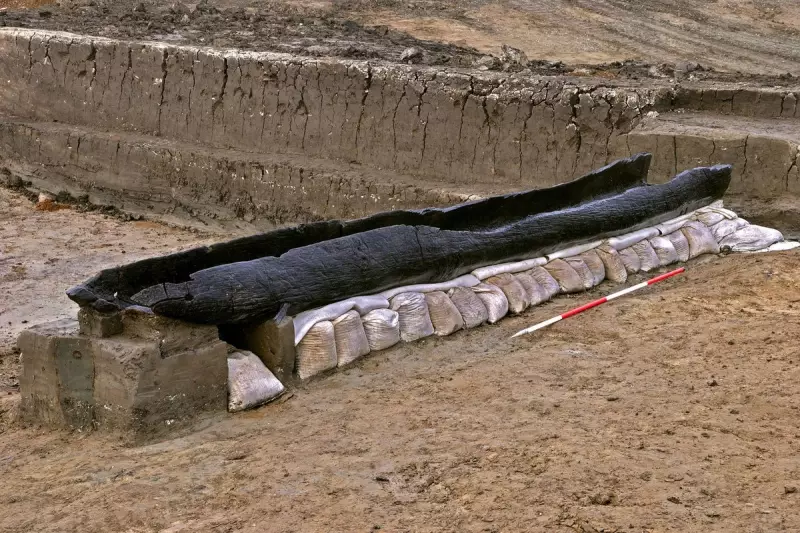
After a meticulous 13-year conservation project, three remarkably preserved Bronze Age log boats are set to go on public display, offering a rare window into ancient British life.
A Remarkable Discovery in the Fens
The story begins in 2011, when a total of nine log boats from the Bronze and Iron Age were unearthed near Whittlesey in Cambridgeshire. They were discovered in a silted-up creek at the Must Farm site, a location that has yielded many archaeological treasures.
These simple vessels, crafted by hollowing out a single tree trunk, had been lying on the riverbed for more than 3,000 years. The unique, peaty conditions of the fenland environment were responsible for their incredible preservation, creating a "peaty silence of time" that protected them from decay.
The Long Road to Conservation
Following their excavation in 2011 and 2012, which was funded by landowner and building products manufacturer Forterra, the boats required specialist care. They have been kept in climate-controlled conditions and treated with a specialised wax and water solution to stabilise the ancient wood.
This painstaking process has taken 13 years to complete, ensuring the vessels are stable enough to be appreciated by the public. The three selected boats from Must Farm will now find a permanent home at Flag Fen Archaeology Park near Peterborough.
Unveiling Ancient Stories
The exhibition is being hailed as more than just an archaeological display. Jacqueline Mooney, General Manager of Flag Fen Archaeology Park, describes it as a "powerful reconnection with the people who once lived, worked and journeyed through this landscape."
Iona Robinson Zeki, an archaeological researcher at the Cambridge Archaeological Unit, provided further insight into the boats' significance. She revealed that they show how these "simple, yet supremely effective boats" were used to navigate the local rivers for nearly a millennium.
The boats on display represent a fascinating cross-section of ancient craftsmanship:
- A 6.3-metre Middle Bronze Age vessel made from oak, which shows signs of charring inside.
- A 2.2-metre fragment of another Middle Bronze Age oak boat, featuring an intricate repair within its hull.
- A smaller 0.8-metre fragment from an Early Bronze Age boat, uniquely crafted from field maple.
According to researchers, these vessels were versatile tools for their creators. They were used not only for laying fish traps but also for transporting people, animals, and materials across the watery landscape of prehistoric Cambridgeshire.





